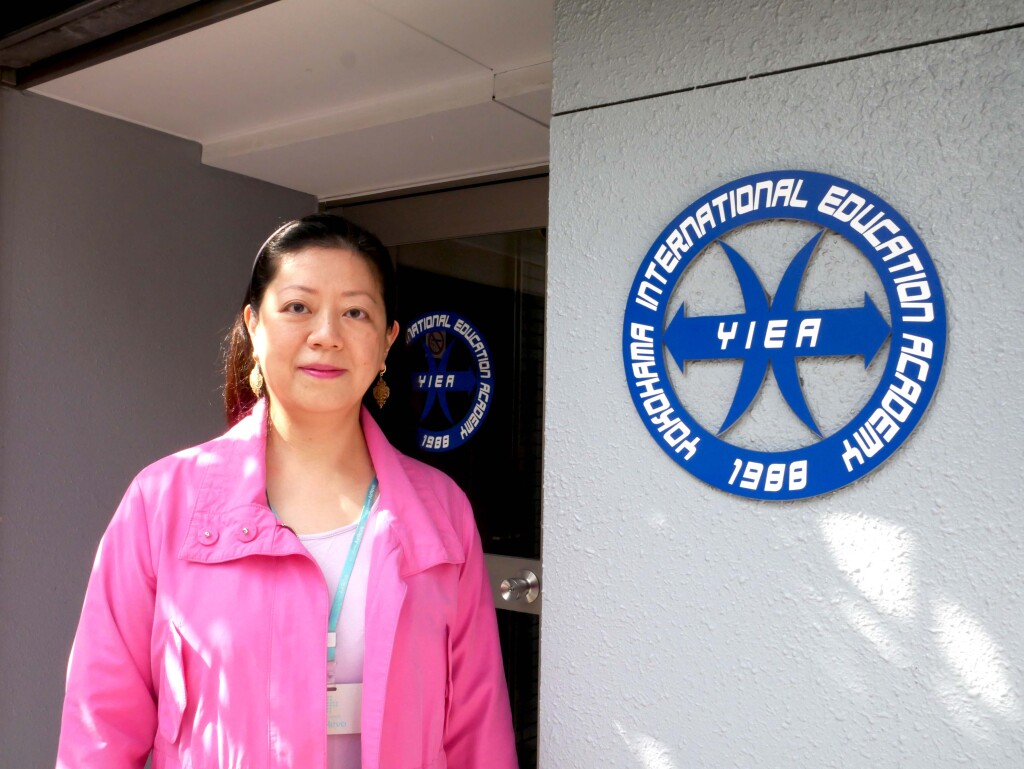Yokohama native Masaki Izumi is the Deputy Director of Yokohama International Education Academy (YIEA)
What have been some of your school’s challenges during the pandemic?
The most difficult part was deciding how to ensure the safety of students and teachers. The students who come from abroad to study have a limited amount of time, so we couldn’t afford to stop classes. When the pandemic worsened, we held classes online. Once face-to-face classes could be held again, we required masks and face shields to be worn, did constant disinfecting, and took other measures to prevent the spread of the virus. Making the right decision was always difficult.
Remote learning/teaching (via Skype, Zoom, etc) became the norm for much of the time during the pandemic. When it comes to learning or teaching a language, what are the disadvantages of this? Why is teaching and learning in a classroom better?
There are things you can do and things you can’t do with online learning. This is not limited to language learning. There is a harmful effect that inevitably occurs when communication continues to be unnatural, as in the phenomenon known as “ZOOM fatigue.” Language is the main tool of communication, but it is accompanied by facial expressions and body gestures. It is normal for students to learn these things from interaction with their teachers, but with online learning, this is largely missing. There is also a lack of communication between students, which limits what they can learn from each other. For example, even if I teach conversation in the same manner, the graduates from last March feel that their conversation skills are not good enough when we meet in person. Even if the content of their learning is the same, what they acquire is different because they have had so little natural face-to-face conversation. Face-to-face lessons in a classroom are still important for language learning. As an indication of this, many universities have returned to face-to-face classes partially, prioritizing lab work and foreign language classes.
Have there been any good things to emerge for YIEA during the pandemic? For example, have you had more time to develop a new curriculum?
We revamped our curriculum right before the pandemic, and we have just begun to heavily incorporate collaborative learning techniques. Collaborative learning is a method that focuses on creating an environment where students can learn from each other. It requires a lot of ingenuity to take that online. I believe that both teachers and students were able to develop skills to respond to change quickly and flexibly, as they were forced to share ideas during this pandemic.
Shifting away from these pandemic-related questions… We’re naturally seeing a lot more machine-generated translations these days. Why is it still valuable for people to learn languages and practice things like translating, even if computers catch up and provide serviceable language skills?
Language is not something that can simply be interpreted or translated. There is a history and culture that comes with the language. I often see things on the Internet and in video streaming that seem to have been automatically translated, but in many cases, what you really want to say is not conveyed. Very few people study Japanese simply because they like it. It is common for people to study the language because they are intrigued by the culture, old or modern. I believe that people who want to understand a certain cultural climate and broaden their horizons actively study foreign languages.
As somebody who is bilingual, what aspects of the Japanese language do you find beautiful or interesting?
The Japanese language is gentle in its expressions. I like the fact that it is not direct, but I think this is something that people from societies where direct expressions are the norm find irritating. However, in situations where ambiguity remains in the language, people pay more attention to the other person in order to read the true meaning. This attentiveness is also a part of Japanese social culture. The other is the more fun side of the Japanese language. There are many onomatopoeia and mimetic words that are not only useful but also fun. Words like “gorogoro”, “korokoro”, and “momimomi” are expressions that are not directly understood when translated into foreign languages.
Through teaching at YIEA, is there anything you have rediscovered that is important?
I think I had several opportunities to reaffirm that life is about opportunities and encounters. A language school is a stepping stone where students stay for one or two years. Most of the time, their real goal is not here. But where they end up next can be changed by a word from a teacher or a friend they meet here. One word of advice can greatly affect a person’s life, so I think we need to consider whether or not we should utter that word. At the same time, we shouldn’t be too lazy to say it.


